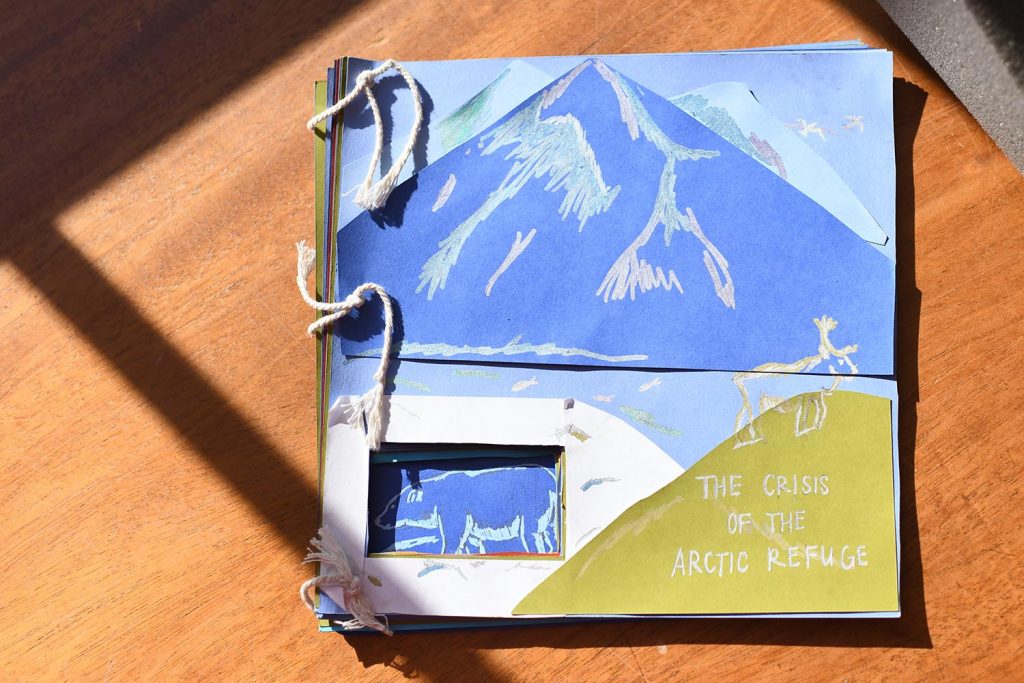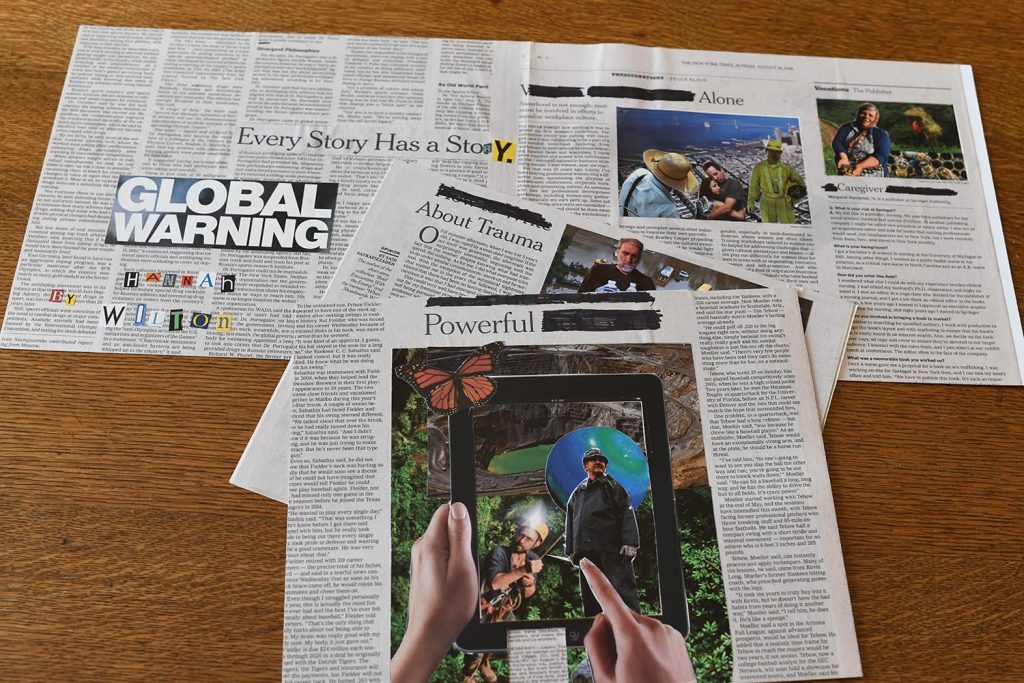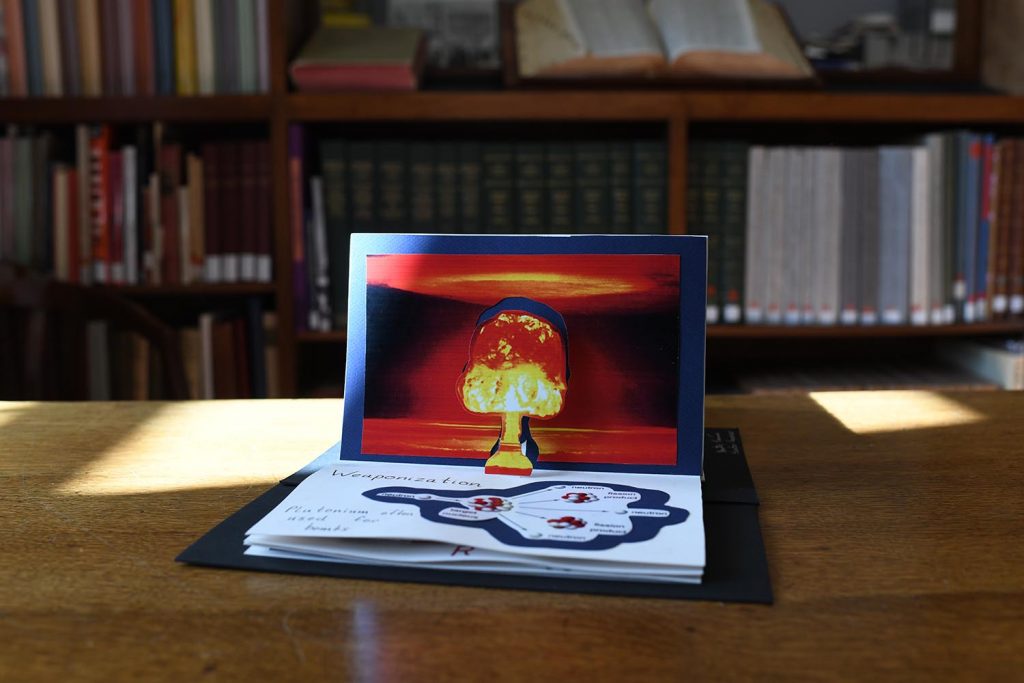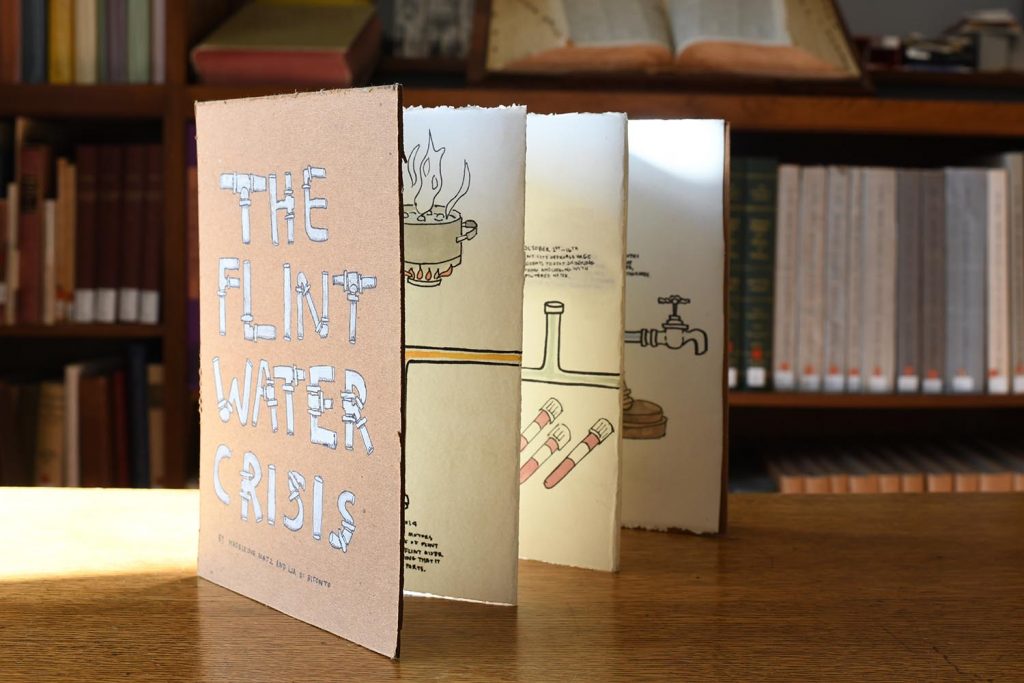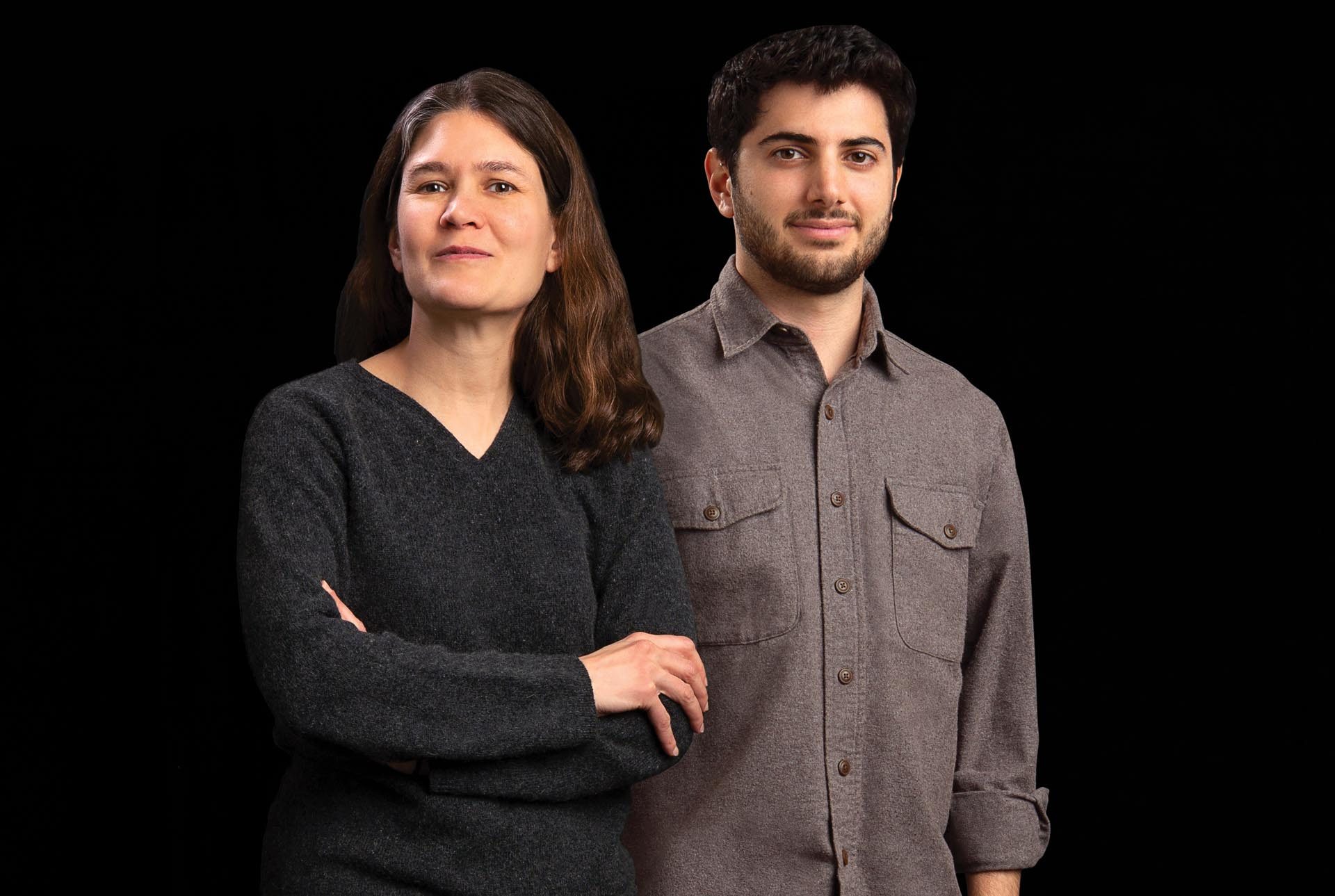Student Artists’ Books: Advocacy Through Creativity
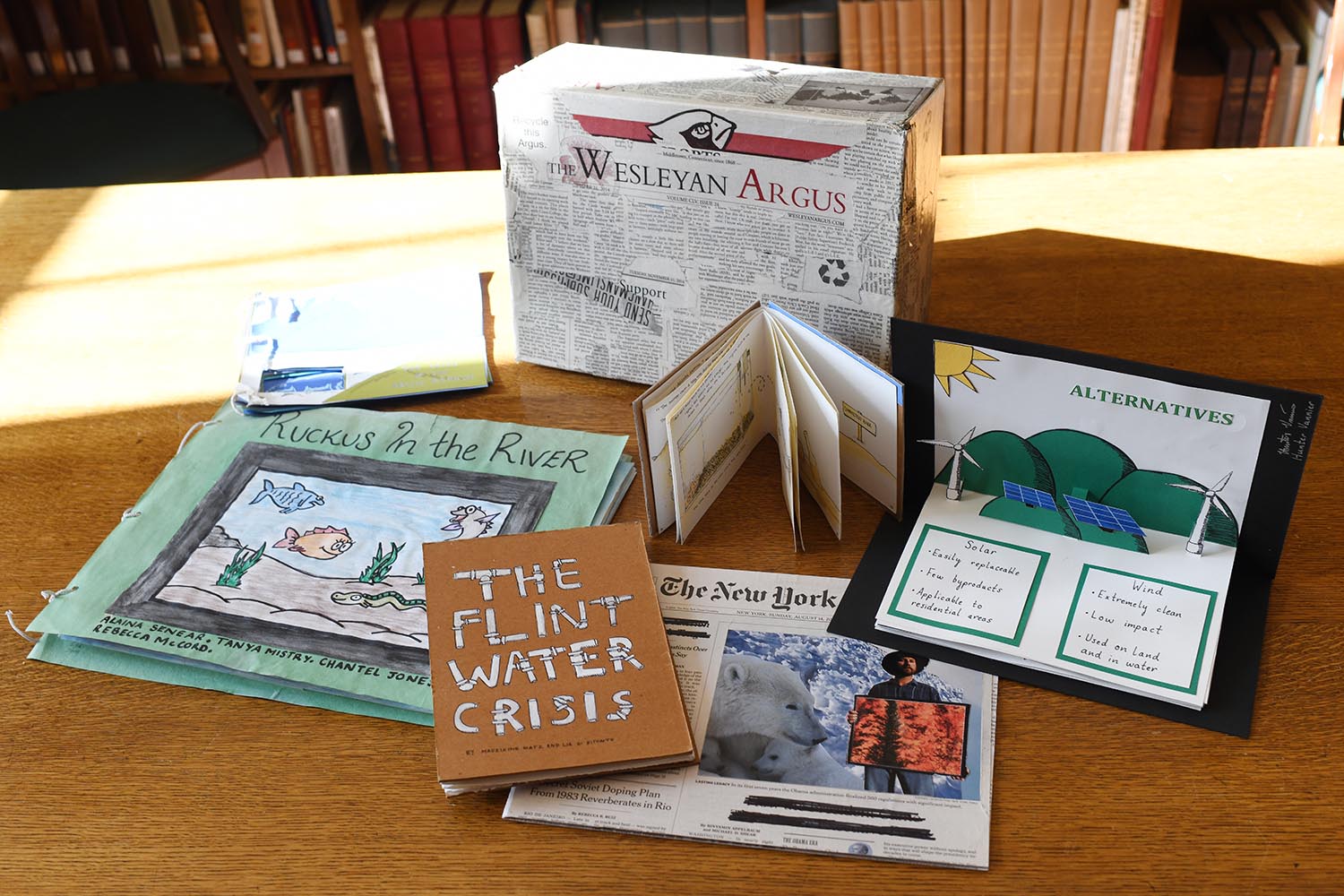
Each year, our Special Collections & Archives (SC&A) staff work with Wesleyan faculty to teach between 80 and 120 class sessions. Be it English and history, or more interesting disciplinary fits like anthropology, theater, and the sciences, the broad range of topics covered by our collections allow us to reach hundreds of Wesleyan students each year.
One class we always look forward to is Introduction to Environmental Studies (E&ES 197), taught in rotation by E&ES professors. These students have a variety of options for their final class project, one of which is to create an artist’s book that demonstrates their understanding of the class’s concepts and presents them in a compelling way. While not every student creates an artist’s book, the whole class does come to SC&A for a short introduction to these volumes. At the end of the semester, several of the most successful and engaging books are donated to SC&A to be added to our permanent collection.
What is an artist’s book? They are works of art that happen to use a book format. They often challenge readers to think about the nature of the book and the act of reading in new ways. We have more than 1,000 of them in Wesleyan’s Special Collections. We are still actively building the collection, though it already includes works on social justice and environmental issues, those responding to books of the past, ones that combine text and textiles, those by female authors, and many more. Showing them to students gives them an opportunity to think about the topic they are studying in a different way.
E&ES 197 can sometimes have close to 50 students in a single class, which presents a fun challenge for SC&A. Our Davison Rare Book Room only holds around 20 students, so we work with the professor to split the class into groups and rotate them through three different stations. Station 1 is time in the Davison Rare Book Room, where they get an introduction to artists’ books and get to see examples with environmental themes by established book artists. Station 2 is with our preservation librarian, who gives a brief explanation of what makes up a book; then everyone makes a simple book and she demonstrates two methods of sewing book bindings. And station 3 is a group discussion led by the professor.
The photographs below show a small sampling of student artists’ books added to the SC&A collection since 2014. Some focus on local topics; others have a much broader subject area.
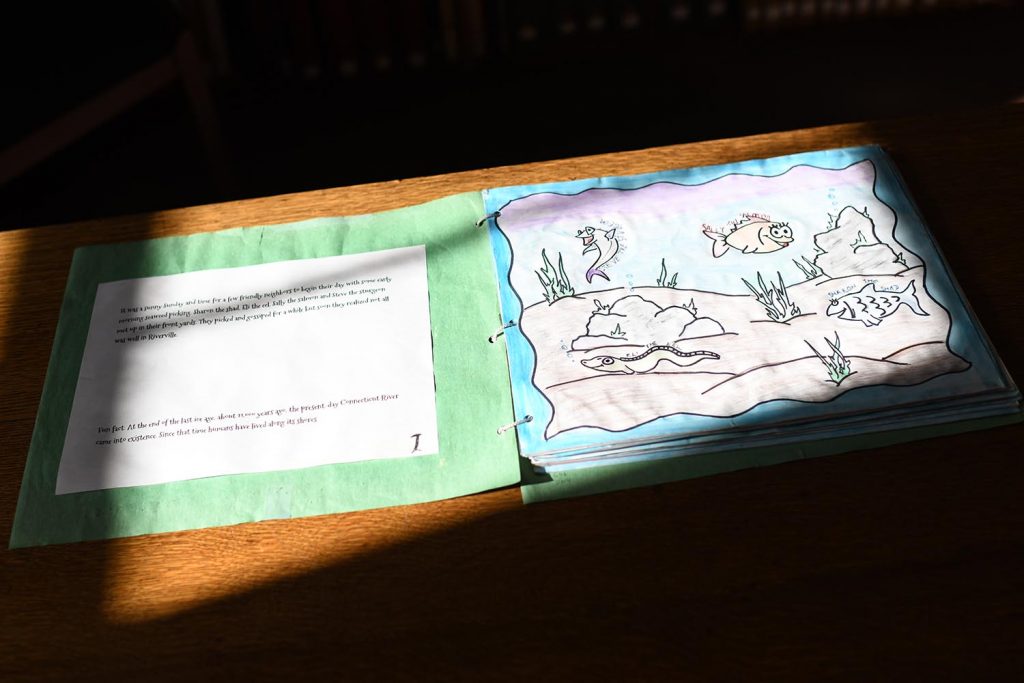
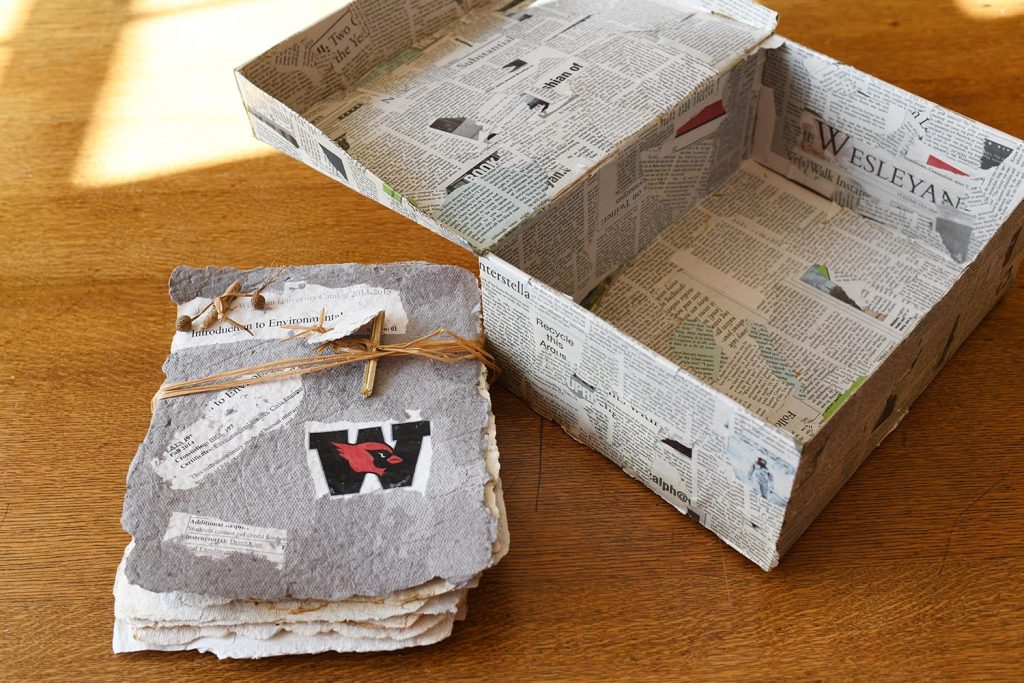
In 2015, we received an untitled artist’s book by Lydia Tonkonow ’17 with a drawing of an Atlantic salmon on the front. Inside is a beautifully hand-drawn story about a class learning about the life cycle of the salmon that live in the Connecticut River watershed and how one should protect them.
